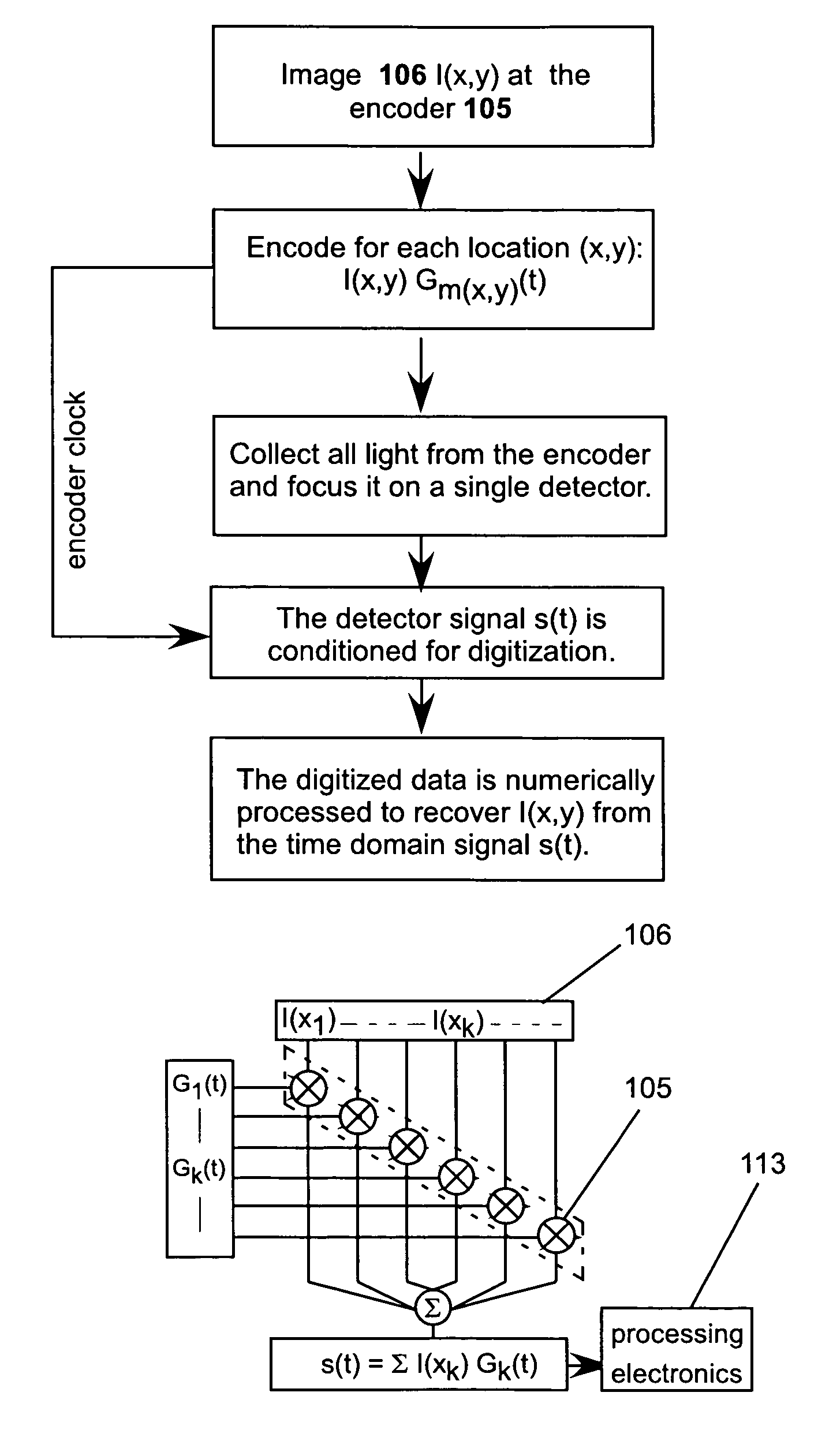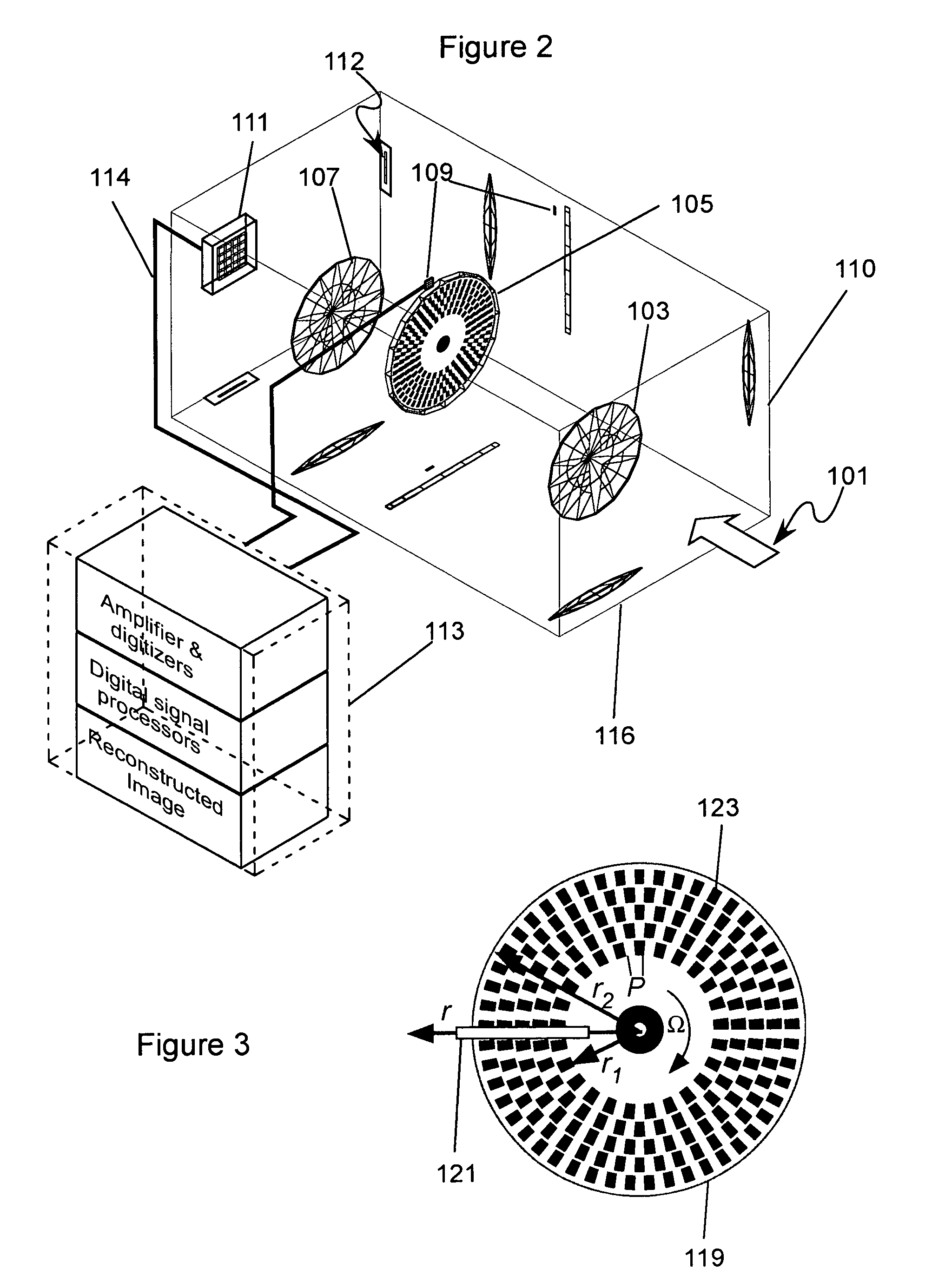Optical encoding and reconstruction
a technology applied in the field of optical encoding and reconstruction, can solve the problems of difficult manufacturing, lower resolution, and difficult separation of one column from the other
- Summary
- Abstract
- Description
- Claims
- Application Information
AI Technical Summary
Benefits of technology
Problems solved by technology
Method used
Image
Examples
Embodiment Construction
[0093]This invention relates to a technique of encoding a one or two dimensional spatial information, collection, and its computational reconstruction. The disclosed methods may be applied to the problem of imaging electromagnetic radiation, spectroscopy, and other methods that usually require a one or two dimensional pixelated array of detectors. The disclosed method enables new imaging modes such as ranging to be combined with a standard one or two-dimensional image. These novel capabilities are accomplished by a special set of methods for dynamic encoding of the image information. This encoding converts spatial information to a time-varying signal. The image is reconstructed by numerically processing the time-varying signal obtained after encoding. Multiple methods for encoding, collection, and reconstruction as well as examples of the use of this novel imaging technique are disclosed. Furthermore, extensions of multirate modulator technique may provide some or all of the functio...
PUM
 Login to View More
Login to View More Abstract
Description
Claims
Application Information
 Login to View More
Login to View More - R&D
- Intellectual Property
- Life Sciences
- Materials
- Tech Scout
- Unparalleled Data Quality
- Higher Quality Content
- 60% Fewer Hallucinations
Browse by: Latest US Patents, China's latest patents, Technical Efficacy Thesaurus, Application Domain, Technology Topic, Popular Technical Reports.
© 2025 PatSnap. All rights reserved.Legal|Privacy policy|Modern Slavery Act Transparency Statement|Sitemap|About US| Contact US: help@patsnap.com



